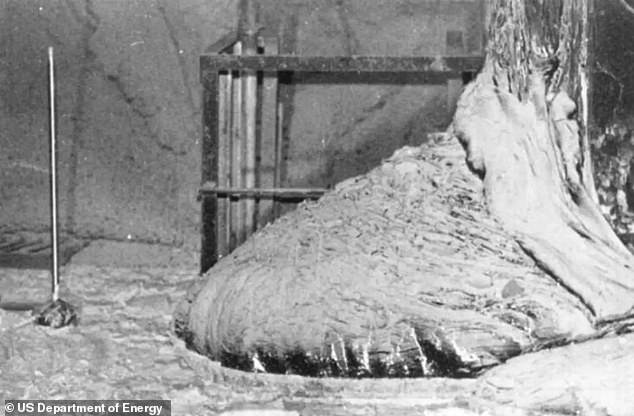This object, shaped like a giant foot, is located in the Chernobyl area, Ukraine.
At first glance, you might mistake it for a supernatural object, straight out of a science fiction story. However, it is entirely real, a consequence of one of the most horrifying radioactive leaks in history. To this day, people still call this object the “Elephant’s Foot.”
The Daily Mail called the “Elephant’s Foot” the “most dangerous object in the world.” Even just looking at this object can be fatal. Scientists predict that even hundreds of years from now, we won’t be able to approach the “Elephant’s Foot” without protective equipment.

How the “Elephant’s Foot” Appeared
On April 26, 1986, Reactor No. 4 of the Chernobyl nuclear power plant in Ukraine experienced a malfunction. Experts discovered the problem and attempted an emergency shutdown, but failed. The temperature in the reactor core rose uncontrollably, causing the cooling water to instantly vaporize upon being pumped in.
The reactor ultimately exploded due to excessive pressure, leading to the Chernobyl nuclear disaster. In the autumn of that year, when rescue teams arrived to contain the radiation, they first discovered the “most dangerous object in the world.”
According to scientists, the overheating Reactor No. 4 melted the surrounding steel and concrete, forming “radioactive lava.” This material flowed downwards, sweeping through various other objects, becoming a complex mixture with extremely high radiation levels. When it cooled, this substance hardened into a new material called corium. It was named the “Elephant’s Foot.”
The Danger of the “Elephant’s Foot”

In 1986, the “Elephant’s Foot” emitted up to 10,000 roentgens (a unit of radiation measurement) per hour—a dose 1,000 times higher than the level that can cause cancer. To put it simply, that amount of radiation is equivalent to 4.5 million X-rays used in human diagnostic imaging.
If exposed to this object for 30 seconds, you would experience dizziness and fatigue for at least a week. After 2 minutes of exposure, cells would begin to hemorrhage. After 4 minutes, it would cause vomiting, diarrhea, and fever. Finally, after 5 minutes of close proximity, the exposed person would be almost beyond help, dying within 2 days.
Due to the extreme danger of the “Elephant’s Foot,” there are very few photographs of this object. The first image was recorded in 1986 by members of the rescue team. Ten years later, the U.S. Department of Energy also collected some photographs of it.
Despite the immense radiation, the recorded images of the “Elephant’s Foot” were also affected.
Nevertheless, the person who had the most opportunity to interact with the “Elephant’s Foot” was Artur Korneyev, deputy director of the Shelter Object project. He personally took several photographs related to the “Elephant’s Foot” before safely withdrawing. An article published in 2021 revealed that Artur is still alive and residing in Ukraine.
However, Artur is an experienced specialist who wore strict protective gear during his exposure. Scientists still warn about the danger of the “Elephant’s Foot,” even though the object has been slowly cooling down over four decades.
In 2016, a concrete and steel structure called the “New Safe Confinement” was placed over the “Elephant’s Foot” to limit further radiation leakage. Since corium is extremely rare, having appeared only five times in history, no one can be certain how the “Elephant’s Foot” will change in the future.

